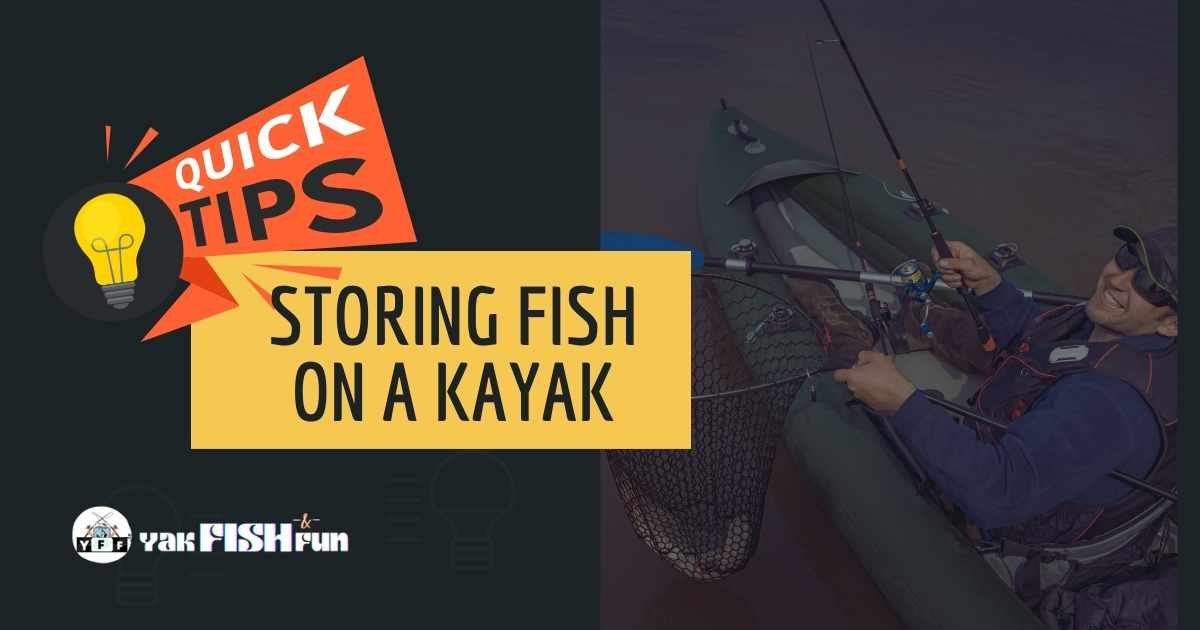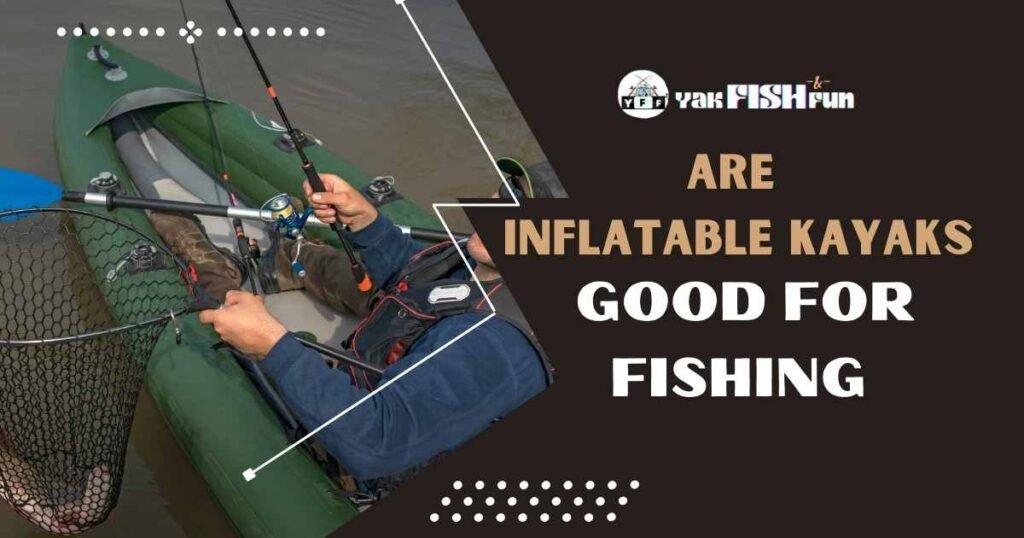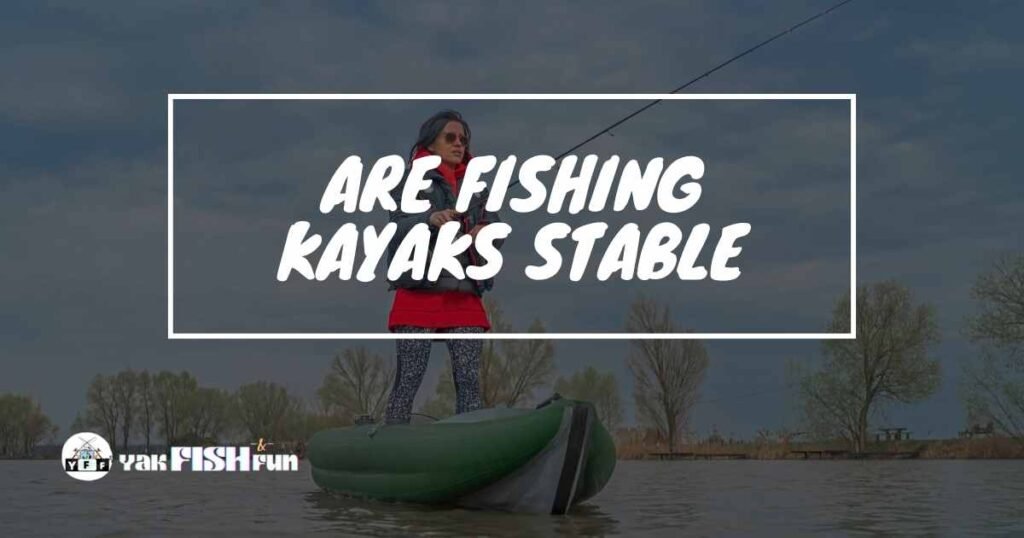Storing fish on a kayak involves more than just finding a spot for your catch; it’s a skill that combines practicality and ingenuity. It’s not only crucial for preserving their taste but also for maintaining their nutritional value.
The choices you make at this stage can make the difference between a delicious meal and a disappointing experience. However, it comes with its own set of challenges and considerations.
This guide will explore the world of storing fish on a kayak. Our goal is to provide you with the knowledge, techniques, and strategies you need to ensure that your hard-earned catch stays fresh, secure, and ready to be enjoyed. Whether you’re new to kayak fishing or an experienced angler, there’s always room to improve in this essential aspect of the sport.
We will dive into the basics of quick storage, discuss where to best place your fish on the kayak and share tips on handling your catch to minimize stress. You’ll also learn about the equipment that can make this process easier, how to maintain balance on your kayak, and the importance of being a responsible angler who cares for both fish and the environment.
Table of Contents

Storing Fish On A Kayak: Best Placement Strategies
Knowing where and how to store fish on a kayak is crucial. The right placement ensures safety, convenience, and the preservation of your catch.
Considerations for Placement
Before discussing specific placement options, several important factors should be considered when deciding where to store your fish on a kayak.
Temperature and Freshness: Temperature plays a vital role in maintaining fish freshness. It is essential to keep your catch cool to prevent spoilage. Storing fish in direct sunlight or exposing them to high temperatures can accelerate bacterial growth and lead to unpleasant odors or even foodborne illnesses.
Balance and Stability: Maintaining kayak stability is crucial for a safe fishing experience. Distributing the weight of the fish evenly across the kayak helps maintain balance. Uneven weight distribution can result in instability and potential safety hazards such as tipping over or difficulty maneuvering.
Accessibility: Easy access to stored fish during your trip is essential. Convenient access allows you to quickly bait hooks or switch out lures without disrupting your fishing rhythm.
Placement Options for Storing Fish
Now that we understand the considerations involved, let’s explore some effective placement options:
- Coolers and Insulated Bags: These containers are excellent choices for keeping your catch fresh. Please place them in shaded areas on the kayak where they won’t be exposed to direct sunlight. Consider securing them using bungee cords or straps to prevent movement during paddling.
- Fish Bags and Stringers: If you like to keep your fish in the water while you’re kayaking, you can use fish bags or stringers. Just make sure to attach them firmly to your kayak so they don’t get in the way when you paddle or slow you down.
- Hatch Compartments: Certain kayaks have special compartments made just for storing fish. To use them well, put your catch in there neatly and close the hatch tightly so water doesn’t get in.
Strategies for Even Weight Distribution
To maintain balance and stability while storing fish on a kayak, consider the following strategies:
- Place fish on both sides of the kayak to distribute weight evenly.
- Distribute heavier catches towards the center of the kayak.
- Balance front-to-back weight distribution by placing fish in different areas along the length of the kayak.
Addressing Environmental Impact
Adhering to ethical and environmental guidelines is crucial when storing fish on a kayak. Consider practicing catch-and-release whenever possible, allowing future anglers to enjoy their fishing experiences. Responsibly dispose of waste generated during your trip to minimize environmental impact.
Quick and Humane Ways to Store Fish in a Kayak
Minimizing Stress: Minimizing stress is crucial for the well-being of the catch. Stress can have detrimental effects on fish health and the overall quality of the catch. By quickly storing the fish, anglers can reduce stress levels and ensure a more humane treatment.
Preserving Freshness: Another important aspect of quick storage is preserving the freshness of the fish. Temperature control plays a vital role in maintaining the quality of the catch. Storing fish promptly helps prevent spoilage and ensures that they remain fresh for longer periods.
Humane and Efficient Storage Techniques
Catch and Release Methods: Anglers should prioritize catch-and-release techniques to minimize harm to caught fish. Using fish-friendly hooks and tools for safe hook removal is essential. Releasing fish back into the water with minimal harm should be practiced. This involves gently handling them and avoiding unnecessary contact.
Quick Cooling: To prevent spoilage, it’s crucial to cool down the caught fish as soon as possible. There are several methods for quick cooling on a kayak fishing trip. One option is using frozen water bottles or ice packs placed inside insulated bags or coolers to keep the temperature low. Wet towels wrapped around the catch can also help maintain freshness.
Minimal Handling: Minimizing handling is key to reducing stress levels during storage. Excessive handling can damage fish scales and skin, leading to further harm. Anglers should use tools like landing nets or gloves for gentle handling, ensuring minimal contact with their hands.
Storage Equipment and Gear
To facilitate quick and humane storage on a kayak, anglers should invest in suitable equipment:
- Fishing Net: A fish-friendly landing net is a tool that helps you lift caught fish out of the water without hurting them.
- Fish Bag or Basket: These special bags or baskets let you store fish safely while they stay underwater.
- Cooler Bags or Hard Coolers: Insulated cooler bags or sturdy coolers with ice packs can keep the temperature low and keep your fish fresh.
- Deck Bags: These bags are attached to the kayak’s deck and are a handy place to store the fish you catch.
Environmental Considerations
Anglers must adhere to local regulations and guidelines for humane fish storage. Catch-and-release practices have an environmental impact, and handling fish responsibly is crucial. By following ethical practices, anglers contribute to the conservation of aquatic ecosystems.
Real-Life Examples and Pro Tips
Experienced kayak anglers have developed various techniques for quick and humane fish storage:
- Use grocery bags as makeshift fish bags when in a pinch.
- Freeze plastic water bottles beforehand to use as ice packs during fishing trips.
- Opt for soft coolers instead of hard coolers for easier transportation on a kayak.
- Utilize catch coolers specifically designed for kayak fishing trips.
Related: Is Kayak Fishing Worth It? Reasons I Love It
By incorporating these pro tips into their fishing routine, anglers can ensure efficient and humane storage of their catch.
5 Mistakes To Avoid When Storing Fish On A Kayak
When fishing from a kayak, one of the most vital things to consider is how to store the fish you catch correctly. It can be tricky because you want to ensure the fish stays fresh and goes smoothly while on the water.
Let’s explore these five mistakes:
Mistake #1: Delayed Storage
Delaying fish storage after the catch is a common mistake that can have negative consequences. When fish are left unattended for too long, they experience stress and reduce their freshness. It is important to store the catch quickly to ensure humane and efficient fish handling.
Mistake #2: Improper Cooling
Another mistake to avoid is improper cooling of the fish during storage. If the fish are not properly cooled, they can spoil quickly, and their quality will degrade. Inadequate cooling can also impact the taste and safety of the catch. Temperature control plays a crucial role in preserving fish freshness.
Mistake #3: Overcrowding Storage Space
Overcrowding the storage space on a kayak with fish is another error that should be avoided. Making this mistake doesn’t just mess up how steady the kayak is; it also messes up the fish you’ve caught. When the kayak isn’t balanced right, it can be unsafe, and having too many fish in there can hurt them by bumping and damaging them.
Mistake #4: Neglecting Ethical Considerations
Not thinking about ethical fishing practices, like catch-and-release, is a mistake that fishermen should avoid. Ethical fishing means being careful not to harm fish and the environment by following rules about what’s right. If you don’t pay attention to these rules, it can hurt the local fish and the whole ocean system.
Mistake #5: Lack of Preparation and Equipment
Heading out on a kayak fishing trip without proper storage equipment and gear is another oversight that should be avoided. Storing fish efficiently becomes easier with adequate preparation, which may compromise their quality. It is essential to have the right equipment for effective fish storage on a kayak.
To avoid these mistakes, it’s helpful to learn from experienced kayak anglers who have encountered them firsthand:
- Carry coolers or insulated bags to store the fish and keep them fresh.
- Use ice packs or frozen water bottles to maintain proper cooling during storage.
- Considering both stability and quality, allocate sufficient space for fish storage on the kayak.
- Follow catch-and-release guidelines when necessary to protect fish populations and ecosystems.
- Ensure you have the necessary storage equipment, such as fish bags or containers, before heading out on a kayak fishing trip.
Effective Strategies for Storing Fish on a Kayak
When fishing from a kayak, it’s crucial to think about storing the fish you catch the right way. Doing this keeps the fish fresh and stops any bad smells or messes on your kayak.
Here are a few strategies to overcome the struggle:
Prioritizing Quick Storage
Quick storage is crucial for preserving fish quality and minimizing stress on the catch. Delayed storage can have a negative impact on fish health, affecting their taste and texture. To ensure optimal freshness, it’s important to implement quick cooling techniques.
One effective method is to use ice packs or insulated bags. These things help keep the temperature low, which slows down the growth of bacteria and keeps the fish fresh. Another way to do this is by wrapping the fish in wet towels, which cools them down quickly through evaporation.
Optimal Placement Strategies
Balancing weight distribution when placing fish on a kayak is essential for maintaining stability. Unevenly distributed weight can affect maneuverability and increase the risk of capsizing. To evenly distribute the weight:
- Place coolers or insulated bags containing the fish strategically around your kayak.
- Utilize hatch compartments designed specifically for storing fish.
- Consider using stringers if you prefer keeping your catch in the water while kayaking.
If you like keeping your catch in the water while kayaking, consider using stringers. Each option has its own good and not-so-good points, depending on what’s easiest for you, what you can get to easily, and what you like best.
Minimizing Handling and Stress
Being gentle when handling fish on a kayak is important to keep them from getting stressed. You should use special nets that don’t hurt their scales or fins and wear gloves that help you hold them without hurting their slimy protective layer.
It’s also a good idea to use catch-and-release methods when you store fish. That means taking out the hook in a way that doesn’t hurt the fish before you let them go back into their natural home.
Environmental Responsibility
Kayak anglers must prioritize ethical fishing practices and environmental responsibility when storing fish. It’s really important to know the rules about how many fish you can catch in the area you’re in. This helps prevent taking too many fish and hurting the environment.
Also, when you store your catch, make sure it doesn’t harm the local environment. Be careful about where you put it to avoid causing problems.
Essential Equipment and Gear
To effectively store fish on a kayak, certain equipment and gear are essential:
- Insulated bags or coolers: These help maintain low temperatures.
- Fish stringer: Ideal for keeping fish in the water while kayaking.
- Fish-friendly landing nets: Prevents damage to scales and fins during handling.
- Gloves: Provide a secure grip without harming the fish.
- Wet towels: Aid in quick cooling by evaporative cooling.
Real-Life Examples and Expert Tips
Experienced kayak anglers have shared their insights into effective fish storage techniques. Some tips include:
- Use separate containers or bags for different species to prevent cross-contamination.
- Label your stored fish with the date caught to ensure freshness.
- Bring along some extra ice packs or frozen water bottles to keep things cool during your fishing trip.
By implementing these things, you can improve your fishing trip, keep your catch in good shape, and do your part in fishing correctly.
And don’t forget, it’s super important to follow the local rules about fishing and how many fish you can catch. This helps make sure we have fish for the future, too.
Bottom Line
So, now you know the best strategies for storing fish on a kayak. Whether you’re a pro fisherman or just getting started, it’s really important to know how to store fish right so they stay fresh and tasty. Using the advice we discussed in this blog post, you can ensure your catch stays in great shape until you’re ready to cook and eat it.
Now that you have the knowledge, it’s time to hit the water and put it into action. Remember, practice makes perfect, so don’t be discouraged if you encounter challenges. With time and experience, you’ll become an expert at storing fish on your kayak. So grab your gear, head out on your next fishing adventure, and make sure to store those fish properly!


